The Baader Hyperion Mark IV Zoom Eyepiece — A Performance Review with Monoviewing and Binoviewing
By: William A. PaoliniDiscuss this article in the forums
January 11, 2018
- 1. Overview
- 2. Packaging, Form Factor, and Build Quality
- 3. Observational Testing
- 3.1 Ergonomics
- 3.2 Technical Performance — Off-Axis Aberrations and Scatter
- 3.3 Stellar Object Performance — Stars, Double Stars, Clusters
- 3.4 Non-Stellar Object Performance — Nebulae, Galaxies
- 3.5 Lunar Performance
- 3.6 Binoviewing with the Baader Mark IV Hyperion Eyepieces
- 4. Overall Impressions
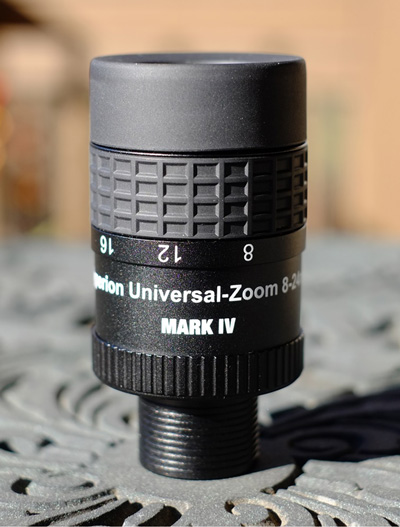 Figure 1 - The Baader 8-24mm Mark IV Hyperion Zoom configured with adjustable eye guard and 1.25" barrel
Figure 1 - The Baader 8-24mm Mark IV Hyperion Zoom configured with adjustable eye guard and 1.25" barrel1. Overview
In 2017, Baader Planetarium released the fourth generation of their Hyperion Universal 8-24mm Zoom eyepiece. This 'Mark IV' incarnation touts the following improvements over the previous Mark III:
- Focal lengths 8, 12, 16, 20 and 24mm have clearly defined and "smoothed-out" Clickstop Action (a must-have for effortless binoviewing)
- Long eye relief, perfectly matched to the human eye
- Flat field design — sharp right to the edge of field
- High Quality Phantom Coating™ Group multicoatings for maximum contrast and minimal reflection, and for improving the views of faint objects
- A large adjustable rubber eyecup, smaller straight rubber eyecup, and a winged, foldable eyecup to fit over M43 photo/video-thread
- M43-video-photo thread for afocal and classical projection photography, permitting optional adaptation of practically any camera with optional accessories
- Includes 2" and 1¼" barrel, usable for all 1¼" binoculars with detachable eye-rest and spotting scopes with 1-⅜" thread (Celestron/Sky-Watcher and others)
The eyepiece comes in an attractive box with a multitude of accessories including a choice of 2" or 1.25" barrels, three different eye guards, multiple top caps, as well as a carry pouch with belt loop. It is quite a versatile eyepiece with various threading options allowing it to be directly connected to cameras and scopes. The manufacturer data sheet with detailed information on specifications and accessories for the Mark IV can be found at:
Manufacturer specs are provided in the table below. The apparent field of view (AFOV) at each click-stop focal length was measured using star drifts on Vega and Altair and also detailed in the table below. The eye relief was bench tested at the 8mm and 24mm settings and provided in the table- note that these direct measures are the optical eye relief as measured from the center of the eye lens. With the eye guard removed there is a slight inset of the eye lens so usable eye relief will be approximately 1.5mm less than the measured figures. In use, while there is only a 4mm change in eye relief between the 24mm and 8mm settings, it was easy to feel the eye relief getting slightly tighter at 24mm.
Focal Length (mm) AFOV (°) Listed AFOV (°) Measured Eye Relief (mm) Listed Eye Relief (mm) Measured Elements/Groups Weight (oz) Coatings Barrel (in) 8 68 70 19.0 19.0 7/4 10.2 w/1¼" 10.9 w/2" Phantom Coating™ Multicoatings 1.25/2 12 63 59 18.2 -- " " " " 16 58 51 17.4 -- " " " " 20 53 48 16.7 " " " " " 24 48 42 16.0 15.0 " " " " Table 1: Manufacturer supplied data and measured data for AFOV and eye relief2. Packaging, Form Factor, and Build Quality
The packaging for this eyepiece is both attractive and informative. The information on the package shows various adapter options for the eyepiece as well as a list of all its major features. I appreciated the attention to detail in the included accessories such as three different eye guard options and multiple top caps to fit the various configurations. The eye guard in the standard configuration is a broad and flat-topped style that adjusts by rotating the eye guard clockwise or counterclockwise. If you rotate it counterclockwise until it stops, then apply a little more pressure, the entire rotating eye guard can unscrew from the housing. With this eye guard removed, you can install either a winged eye guard or a standard heavy rubber fixed/foldable eye guard, both of which are included with the eyepiece.
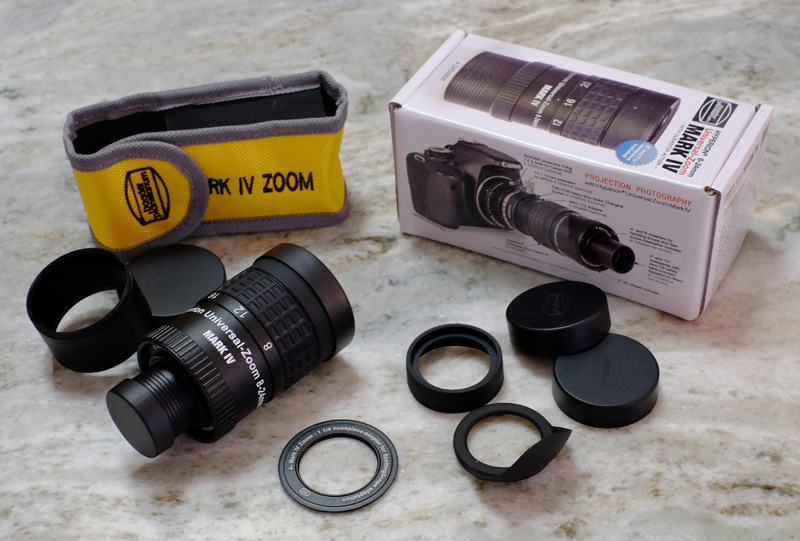 Figure 2 - Items included in the box with the Baader Hyperion Mark IV Zoom
Figure 2 - Items included in the box with the Baader Hyperion Mark IV ZoomI also liked that the 2" barrel can be removed so only the 1.25" barrel is in place.
The eyepiece also has a dual 2" and 1.25" skirt design. Since most of my observing is done with 1.25" eyepieces, I find it inconvenient when a dual-skirt design does not allow the removal of the 2" skirt. So I appreciated that Baader allows the removal of the 2" barrel so that only the 1.25" barrel is in place.
The form factor of the Mark IV is fairly compact compared to other wide-field eyepieces, and at a weight of 10 ounces, it's nice and light. Compared to its predecessor, the Mark III, it is about 1/8" thinner, it has a much smoother zooming operation with a lighter feel to the click-stops, it has an inset as opposed to a raised rubber zoom grip, and it replaces the Mark III's undercut on the barrel with a new and improved ribbed design. Overall, I was quite pleased with the build quality, fit, and finish of the Mark IV; it feels and operates like a high-quality eyepiece.
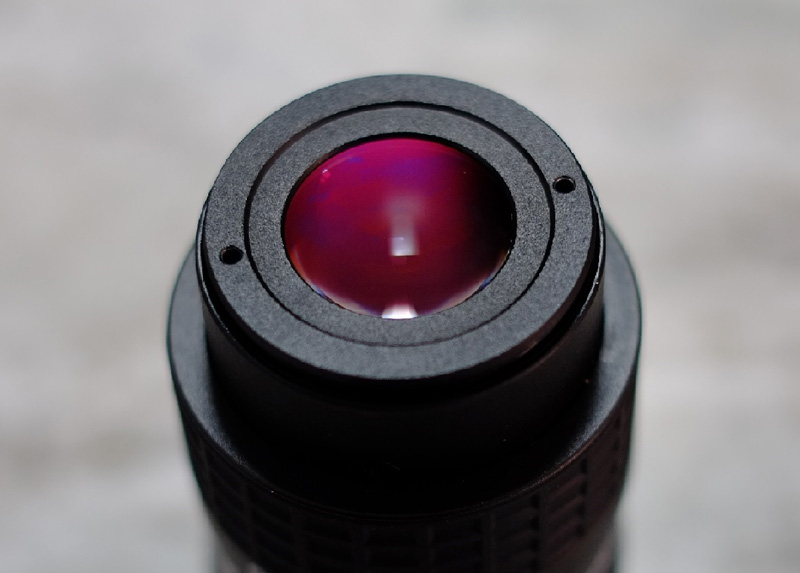 Figure 3 - Eye lens view with eye guard removed to reveal accessory threading and for easy cleaning.
Figure 3 - Eye lens view with eye guard removed to reveal accessory threading and for easy cleaning.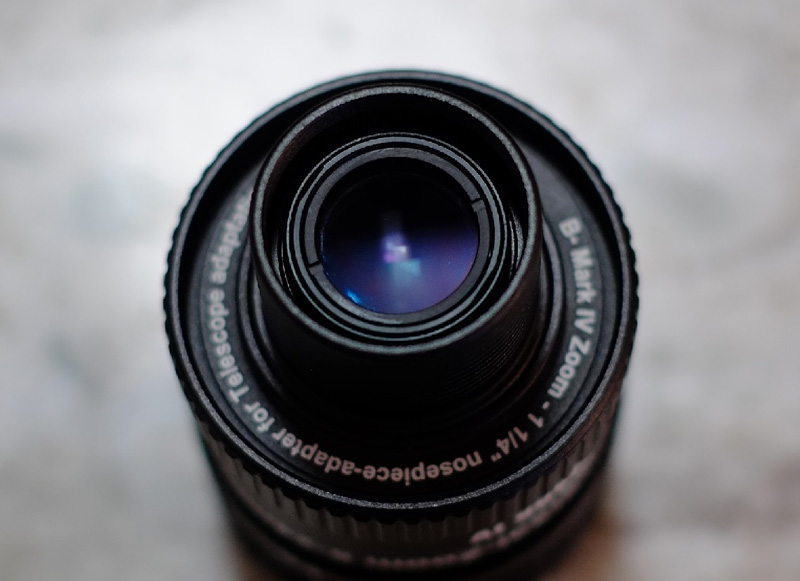 Figure 4 - Field lens view showing the field lens group that moves when zoomed.
Figure 4 - Field lens view showing the field lens group that moves when zoomed.3. Observational Testing
Field testing took place over several weeks in a Yellow Zone in rural Virginia where the sky quality meter readings are approximately 21.2 mag/arcsec2 on moonless nights. Most testing was accomplished with the Takahashi TSA-102 f/8 Super Apochromatic refractor with a Baader Zeiss 1.25" prism diagonal. The Orion XT10i f/4.7 Dobsonian with Paracorr was also used to evaluate off-axis performance of star points in faster optics. Outdoor temperatures during field testing ranged from +18° to +45° F. Objects observed included, among others:
Moon Open Clusters NGC 869/884 Altair Open Cluster M36 Betelgeuse Open Cluster M37 Capella Open Cluster M38 Vega Open Cluster M45 Double Star Rigel Reflection/Emission Nebula M42 Double-Double Star Epsilon Lyrae Reflection/Emission Nebula M43 Multiple Star Sigma Orionis Reflection/Emission Nebula NGC1977 Multiple Star Theta Orionis (Trapezium) Planetary Nebula M57 Double Star Iota Orionis Star clouds of the Milky Way Double Star Delta Orionis 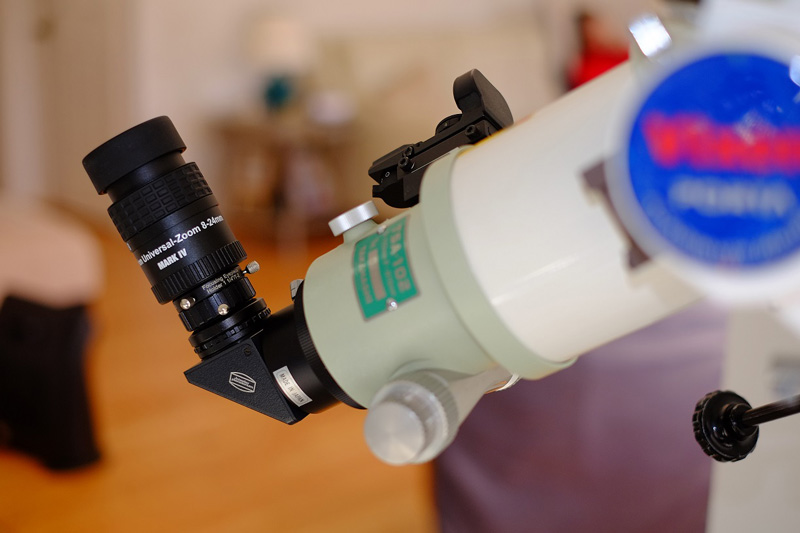 Figure 5 - Baader Mark IV Zoom with Baader Zeiss 1.25" prism diagonal in the Takahashi TSA-102 on a Vixen Porta-II Mount.
Figure 5 - Baader Mark IV Zoom with Baader Zeiss 1.25" prism diagonal in the Takahashi TSA-102 on a Vixen Porta-II Mount.3.1 Ergonomics
Overall, the Mark IV has well-thought-out ergonomics and was enjoyable to use. Its size is compact enough and its weight light enough that it was not burdensome, even when used in a binoviewer. The flat, broad twist-up eye guard functioned smoothly, but I found that I did not like how the broad flat-top surface contacted my face. As a result, it was a distraction when observing. I much preferred the fixed, hard rubber eye guard that is included with the eyepiece. This alternate eye guard is fairly thick and sturdy, and its height is perfect for the eye relief of the eyepiece. It also effectively blocks external light sources when observing.
I found the function of the zooming collar to be quite effective. The inset square panels on the rubber zoom collar were very easy to feel and identify in the dark. If I did not have the eyepiece tightened in the focuser, then the knurled metal grip ring at the bottom of the eyepiece was also easy to feel and locate in the dark to hold the eyepiece so it would not rotate when zooming. The zoom function itself was also very smooth and light. Even when the eyepiece was only lightly held in pace by the focuser's compression ring, it was easy to work the zoom with one hand.
The click-stops at each focal length were almost too light to feel, so I found that it was easier for me to listen for the light click sound rather than try to feel the indent points as I zoomed. I would have preferred if the click stops had just a little more tactile response.
Finally, the multi-ridged rings that Baader uses instead of an undercut on the barrel functioned as hassle-free as a smooth barrel. Never did the Mark IV's barrel hang on the compression ring when the eyepiece was inserted or removed from the focuser. The Pentax XWs I was using in comparison would hang often when extracted from the focuser.
3.2 Technical Performance - Off-Axis Aberrations and Scatter
The quality of off-axis star images is the concern of many observers when deciding on whether to purchase a particular eyepiece. The Mark IV was tested in both the f/8 TSA-102 and the f/4.7 Orion XT10i Dob with Paracorr to assess its performance with star images. Brighter stars like Altair and Vega were used as they would show any aberrations more easily. In both instruments, the Mark IV maintained sharp point-like star images across the vast majority of the field of view (FOV), while field curvature (FC) and lateral color (LC)were the only easily noticed aberrations. In the TSA-102, the FC was very slight and inconsequential starting about 75% out from center, then grew to the point where about a 1/8th turn of the fine focuser knob was needed to clean it up the images at the field stop.In the fast XT10 with Paracorr, FC was similar, and in addition, some LC was present. These aberrations appeared mainly at the 24mm through 16mm settings. At the 12mm and 8mm settings, the FC was greatly reduced and the LC all but vanished. Overall, the eyepiece had very good to excellent off-axis performance.
Brighter stars were also used to assess scatter and a 24mm Explore Scientific (ES) 68° eyepiece and a 20mm Pentax XW were used for comparison. Overall, I felt the scatter was well controlled in the Mark IV. Compared to the 24mm ES68, the Mark IV showed a smaller halo of scatter around bright stars, but it showed a brighter and larger halo compared to the Pentax XW. While I do at times find the scatter in the 24mm ES68 a little distracting, I did not find it so in the Mark IV. The scatter lay somewhere in between the ES and the Pentax XW
At no time during the tests of the Mark IV were there any instances of ghosting, flare, eyeball glint, or other unwanted light artifacts in any of the telescopes.
3.3 Stellar Object Performance — Stars, Double Stars, Clusters
Observing double stars was quite enjoyable with the Mark IV. For close doubles or those with components of unequal brightness like Rigel, it was fun finding the star at the lowest magnification, then slowly zooming in until the star split and the companion became visible. With Rigel using the TSA-102, this happened at about the 16mm setting (50x) which is when the dim companion first peeked out from the glow of the very bright magnitude-zero primary. All doubles were very enjoyable to observe with the Mark IV and it performed on par with my other high-quality eyepieces. A variety of open clusters were observed with the Mark IV and the 24mm ES68, 18mm Tak LE, 20 XW, and 10 XW. All eyepieces showed the clusters relatively on par except for AFOV differences. Faintest stars and colorful stars in all clusters were rendered just as effectively in the Mark IV as they were in the Tak LE and Pentax XWs. Faint clusters, such as the overlooked NGC 1907 next to brighter M38, were also shown just as effectively against nicely dark background fields of view. At the 10mm setting the Mark IV rendered the showcase Double Cluster as magnificently as the 10mm Pentax XW with all the faintest stars showing equally well against a rich dark background. The 24mm ES68 however fell behind a little compared to the others, rendering the Double Cluster somewhat washed out looking in comparison to the Mark IV at the 24mm setting. Even though the AFOV is relatively small in the Mark IV at the 24mm setting, in the TSA-102 at 34x both NGC 869 and 884 were still framed in the same FOV.
3.4 Non-Stellar Object Performance — Nebulae, Galaxies
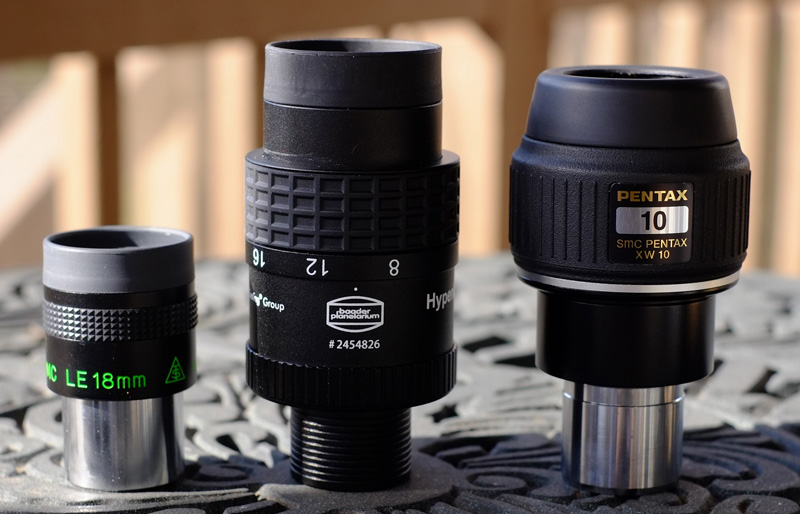 Figure 6 - Size comparison of the Baader Hyperion Mark IV Zoom (center) compared to other eyepieces used in testing.
Figure 6 - Size comparison of the Baader Hyperion Mark IV Zoom (center) compared to other eyepieces used in testing.The nebulae M42, M43, NGC 1977, and M57 were the only non-stellar deep sky objects (DSO) observed during the testing sessions. The Ring Nebula, M57, was rendered just as nicely in the Mark IV at 10mm as it was in the Pentax 10 XW. Both showed the ring just as brightly and just as structured: oval with a nicely darker central region. The dim magnitude 13 star just outside the ring was also equally visible though both eyepieces when using the Orion XT10.
Having lived for the past decade in a bright suburban Red Zone near Washington, D.C., many DSOs have become quite a treat from my new home about 70 miles southwest of Washington, D.C. in a more rural and darker Yellow Zone. M42 from this location no longer resembles as much of a winged bat as it used to since it wings now extend almost full circle when observed on moonless nights. So the Orion Nebula has become even more of a treat to observe, showing much more extent and structure in the nebulosity.
For assessment, the Mark IV was compared to the 20mm XW and 10mm XW eyepieces with M42, M43, and NGC 1977 (the reflection nebula to the north of M42/M42). Both eyepieces showed these objects excellently, with mottled and filament structure visible throughout M42, and the dark regions prominently rendered not only in M42 but also in NGC 1977. The Mark IV could not keep up with the Pentax XWs in revealing the extent of the nebulae. The Pentax XWs showed a slightly larger extent to the nebulosity of M42 and NGC 1977, and M43 overall appeared slightly brighter and more prominent. At the 20mm setting the Mark IV was also not nearly as engaging as the Pentax XW since the AFOV of the Mark IV was only 48° compared to the much larger 70° AFOV of the XW. However, it became as engaging as I zoomed in to the 8mm — 10mm positions on the Mark IV where its AFOV was more expansive and similar to the XWs.
Overall, the Mark IV performed quite well on nebulae,but the Pentax XWs showed these objects slightly better and in a more engaging manner at the longer focal lengths. However, the convenience of being able to change focal lengths without reaching for other eyepieces made the observing session flow much better with the Mark IV. It was nice not to have to change eyepieces while observing M42 as I progressed from taking in the entire object to getting closer to examine fine structure or to get even closer to see the sometimes elusive E and F components of the Trapezium.
3.5 Lunar Performance
While the Mark IV easily kept pace with premium fixed focal length eyepieces on other targets, it came into its own and even pulled ahead when observing the Moon. Lunar observing was quite memorable with the Mark IV. On the Moon, more than any other target for me, I typically move between low and high magnifications quite often, so using the Mark IV was a big help. The Moon's features are rich and varied, so it is easy to linger for long periods using low magnifications to get the big picture and explore for items of interest, then switch to high magnifications to get up close and personal.
Comparing the Mark IV to the 18mm Tak LE, I found the Mark IV to have a slightly cooler tone. On-axis the Mark IV also showed a crisper rendering of lunar features. The subtlest low contrast features, such as delicate maria shadings and eject a patterns, were slightly more distinct in the Tak LE. This difference was very subtle, however, and the crisper rendering of the higher contrast lunar features in the Mark IV was more appreciated. These performances and differences held up whether using the eyepieces at 18mm (45x in the TSA-102), or with a Barlow at 140x. In both eyepieces the view was sharp to the field stop in the TSA-102.
When switching the Mark IV to the 10mm position and comparing it to the Pentax 10mm XW, both eyepieces performed on par on the Moon. One of my favorite regions, the lava flows around the Crater Clerke, was rendered spectacularly even though at the time of the observations it was illuminated rather flatly. Both the Mark IV and Pentax XW also showed the same very minimal lateral color when the limb of the Moon was off-axis. This lateral color, which is common to most all wide fields, showed as a thin line of color hugging the limb; it was aqua-blue in the XW and lime-green in the Mark IV.
While the 10XW and Mark IV performed similarly with lunar observing, with a Barlow they showed some differences. Using a Tele Vue 2x Barlow with these eyepieces in the TSA-102, the resulting magnification was now approximately 160x. In this configuration, the Mark IV showed a slightly crisper view on high contrast lunar details. In addition, focus snap was better in the Mark IV. On subtle maria and eject a shadings however, while both seemed to show them with a similar contrast visually, the Pentax XW showed them with a very slight amount of more definition and structure.
Finally, when observing the Moon with longer eye-relief eyepieces, the brightness of the Moon will often make holding a good exit pupil to prevent any blackouts difficult. The Mark IV excelled with this, however, and it exhibited no sensitivity to eye positioning, whereas the Pentax XW was more sensitive.
3.6 Binoviewing with the Baader Mark IV Hyperion Eyepieces
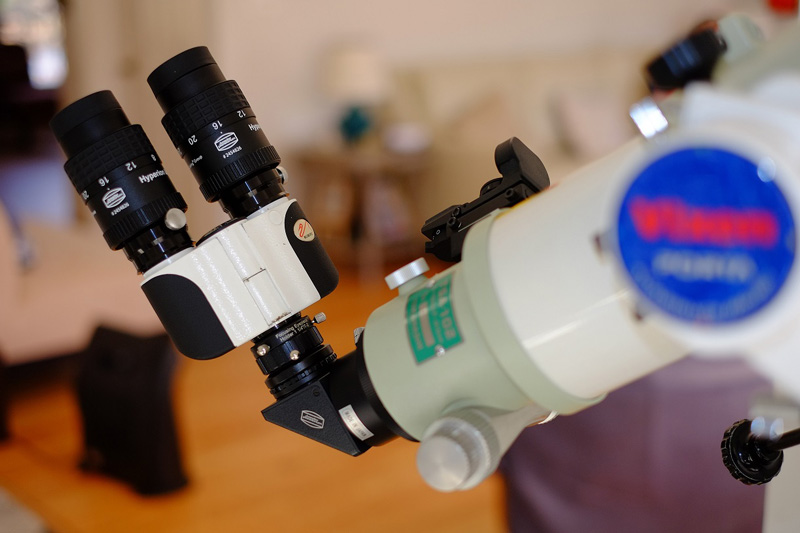 Figure 7 - Baader Hyperion Mark IV eyepieces in a William Optics Binoviewer.
Figure 7 - Baader Hyperion Mark IV eyepieces in a William Optics Binoviewer.I generally have a love-hate relationship with binoviewing. At times I really enjoy it for its comfort and natural observing with two eyes, and at other times I hate it because of how cumbersome it is adding excessive weight to the end of the telescope and constant changing of dual eyepieces or Barlows to achieve various magnifications. With the Mark IV zooms however, I found binoviewing more convenient as the eyepieces are light enough as to not feel like I am placing a brick on the end of my telescope, and all that futzing with exchanging Barlows or eyepieces for multiple magnifications is not needed.So it was quite a pleasant surprise for me to enjoy how easy binoviewing became using a pair of Mark IV zoom eyepieces!
When observing open clusters and nebulae, the view can appear a bit dimmer overall compared to using just a single eyepiece. But this is compensated by the advantage of reduced eye strain and the perception of a three-dimensional aspect of many celestial objects. You get the perception of depth when binoviewing that you do not get when viewing with just one eyepiece. This dimensionality was very nice with open clusters, but was completely spectacular on M42. The nebula and stars in M42 took on a very '3D' appearance like it was hovering in space.
Initially when binoviewing with the Mark IVs, I had each eyepiece configured with the flat broad adjustable eye guard. I found this configuration cumbersome as my nose would not fit between the gap of the two eye guards. However, once I removed those eye guards and used the fixed standard rubber eye guards that come with the Mark IVs, then this ergonomic issue vanished.
After spending some sessions binoviewing double stars and DSO, I moved to lunar observing with the Mark IVs in the binoviewer. This is where the Mark IVs clearly became my favorite. In this configuration I was able to quickly move from low magnification viewing to acquire areas of interest, then fairly effortlessly zoom in to scrutinize interesting lunar features. I ended up spending an entire session just observing the Moon with the Mark IVs in the binoviewer, something I've never done before when binoviewing. And given how nicely the Mark IVs work with Barlows, as they show a bit of a crisper view on-axis when Barlowed than my XWs, I was able to really pump up the magnification on the Moon with my TSA-102. After some time doing general observing on the Moon with the native 24-8mm settings (34x to 102x with the TSA-102), I added a Barlow to the binoviewer so the Mark IV zoom range provided 105x to 316x. This magnification proved to be a sweet spot with the TSA-102, and I left it in that configuration for a few hours while I played around on the surface of the Moon!
I've read about a few other observers who used the Baader Hyperion Zoom for binoviewing, and while it sounded novel, I never thought it would be very enthralling. This opportunity to evaluate the eyepieces has proven to me that they are a potent and spectacular combination, especially for lunar observing. Unfortunately, there were no planets positioned to test out this binoviewing configuration for planetary viewing. However, I did spend some time observing some of the very subtle low contrast areas on the Moon and compared how the Mark IVs showed these features compared to some of my planetary eyepieces. Based on what I saw, my expectations are that the Mark IVs may perform quite well in the binoviewing planetary role, so it is something I hope to be able to try one day. I do know however,that some other observers feel it is a perfect setup for planetary binoviewing. For those considering using the Mark IV Zoom in a binoviewer, I measured the minimum Interpupillary Distance (IPD) for the Mark IVs in my William Optics binoviewer: it is 55.5mm. The manufacturer specification for the width of the Mark IV is 55mm.
4. Overall Impressions
Over the course of testing the Baader Hyperion Mark IV Zoom, the eyepiece showed itself to be a capable and potent observing tool. Optically it provided a bright, high contrast, and controlled view that allowed it to keep up with even premium wide-field eyepieces like the Pentax XWs. Although its Abbe Orthoscopic-like AFOV at the longer focal lengths may be too restrictive for some observing situations, its wide field performance at the shorter focal lengths and its flexibility to perform the function of several eyepieces make it a powerful accessory for any telescope. Its smaller form factor, lighter weight, and zooming function also demonstrated it to be an ideal binoviewing eyepiece, especially when used for lunar observing as it can replace multiple sets of fixed-focal-length eyepieces. The Mark IV also demonstrated that it can be part of a minimalist set of eyepieces for any telescope — especially if accompanied by a 2" 25-35mm wide field for scanning and finding and a 2x or 3x Barlow. Finally, the very smooth action of the Mark IV's mechanics, its quality build, and its range of optional adapters for photography and spotting scopes, and its excellent off-axis performance even in a fast f/4.7 Dobsonian makes it a truly unique and effective astronomical eyepiece.
 About the Author
About the Author
William "Bill" Paolini has been actively involved in optics and amateur astronomy for 45 years, is author of the desk reference on astronomical eyepieces: Choosing and Using Astronomical Eyepieces which is part of the Patrick Moore Practical Astronomy Series published by Springer of New York, has published numerous product reviews on major online amateur astronomy boards, and volunteers with public tours at a famous vintage Clark refractor site.
Bill's professional background is as an officer in the U.S. Air Force and as a computer scientist, holding a Bachelor's degree in Computer Science and a Master of Science in Education. He has worked for the U.S. Department of Defense, the U.S. Department of Commerce, the Federal Trade Commission, the Federal Reserve, the World Bank, and a variety of commercial corporations in the information technology, information technology security, and telecommunications industries.
Bill has been observing as an amateur astronomer since the mid-1960's, grinding mirrors for homemade Newtonian telescopes during the 1970's and eventually owning, using, and testing several hundreds of eyepieces in a wide variety of telescopes from Achromatic and Apochromat refractors to Newtonian, Maksutov-Cassegrain, and Schmidt-Cassegrain designs. Today he enjoys observing and testing new equipment from his suburban home west of Washington, D.C., where his primary amateur astronomy pursuits are lunar, planetary, bright nebula, open cluster, and globular cluster observing.
***
This article is © William Paolini 2018. All rights reserved. Images © William Paolini 2018. For permission to use images, contact the author at wapaolini@hotmail.com.
Please login or register to watch, comment, or like this article.Gabby76, Mak the Night and Dave In Vermont like this.Rate This Article:
-
Final Announcement: We're Saying Goodbye to AstronomyConnect. Read Our Closing Notice.
Dismiss Notice
New Cookie Policy
On May 24, 2018, we published revised versions of our Terms and Rules and Cookie Policy. Your use of AstronomyConnect.com’s services is subject to these revised terms.

